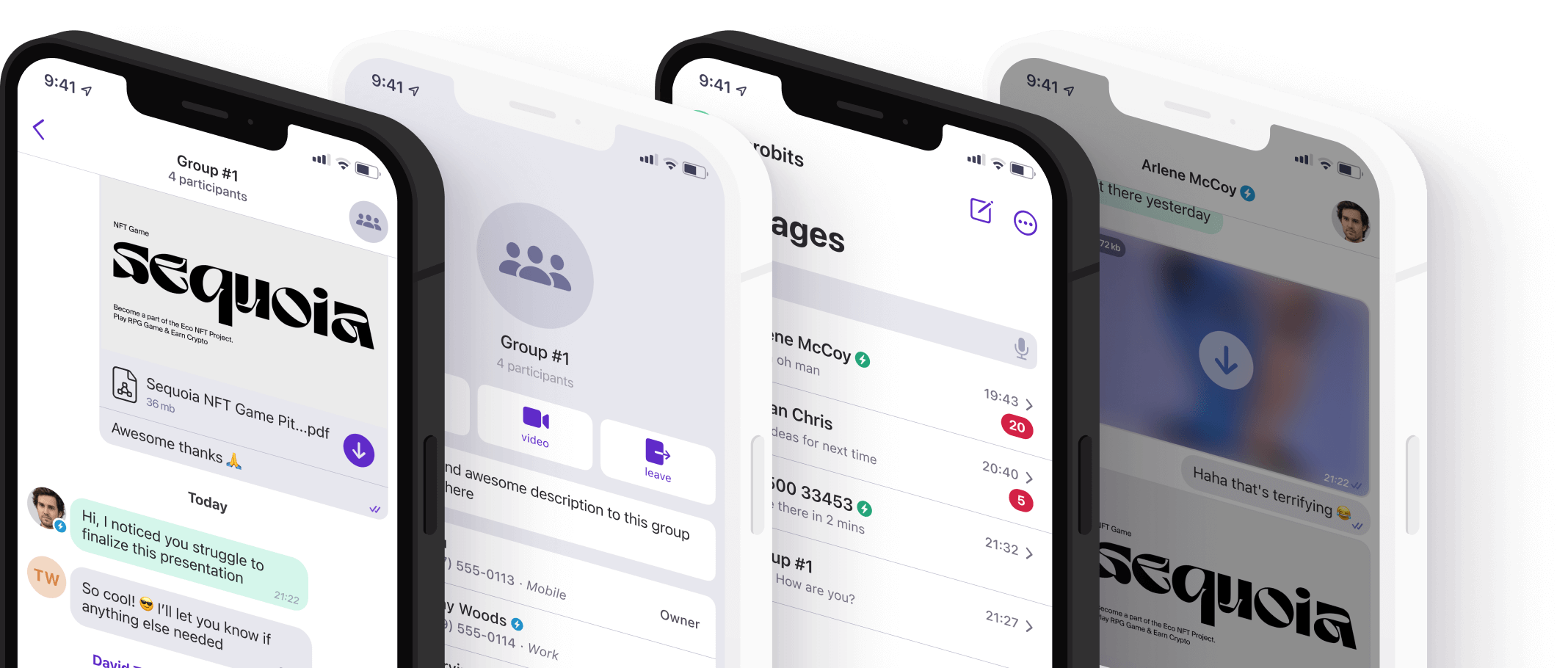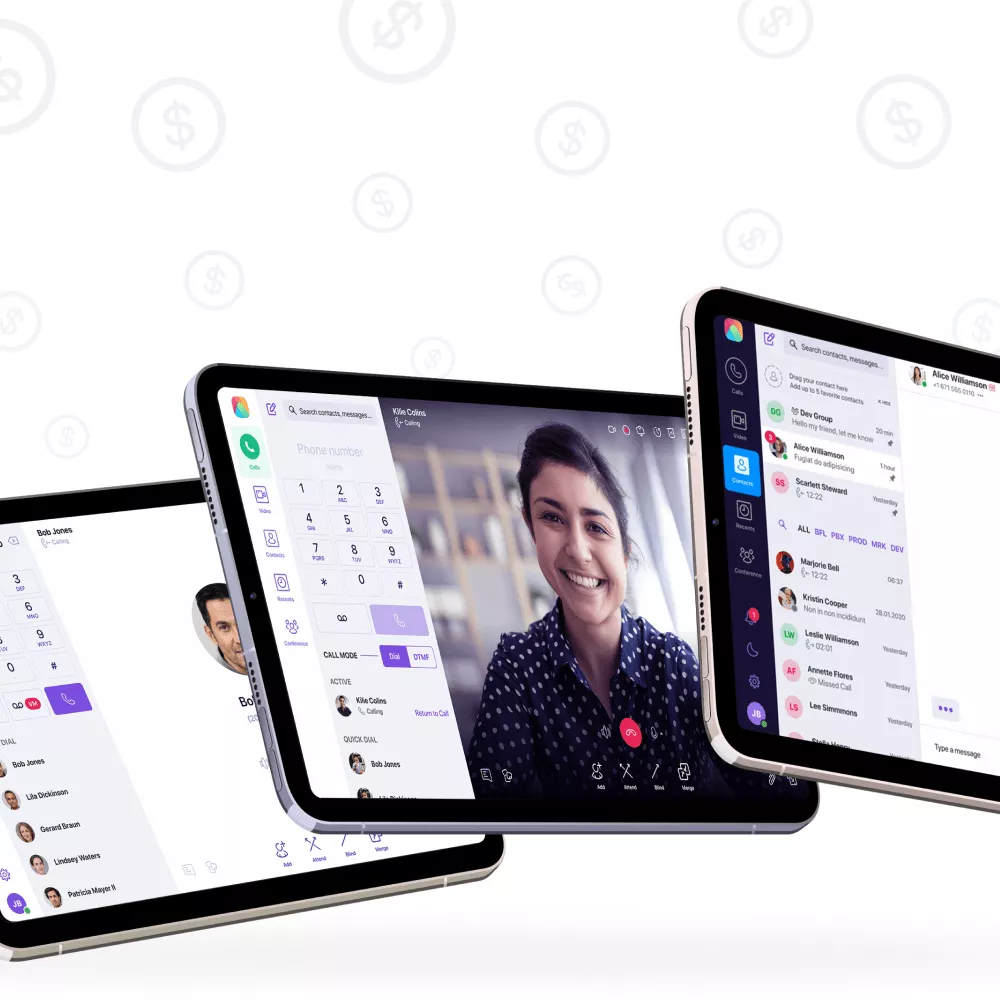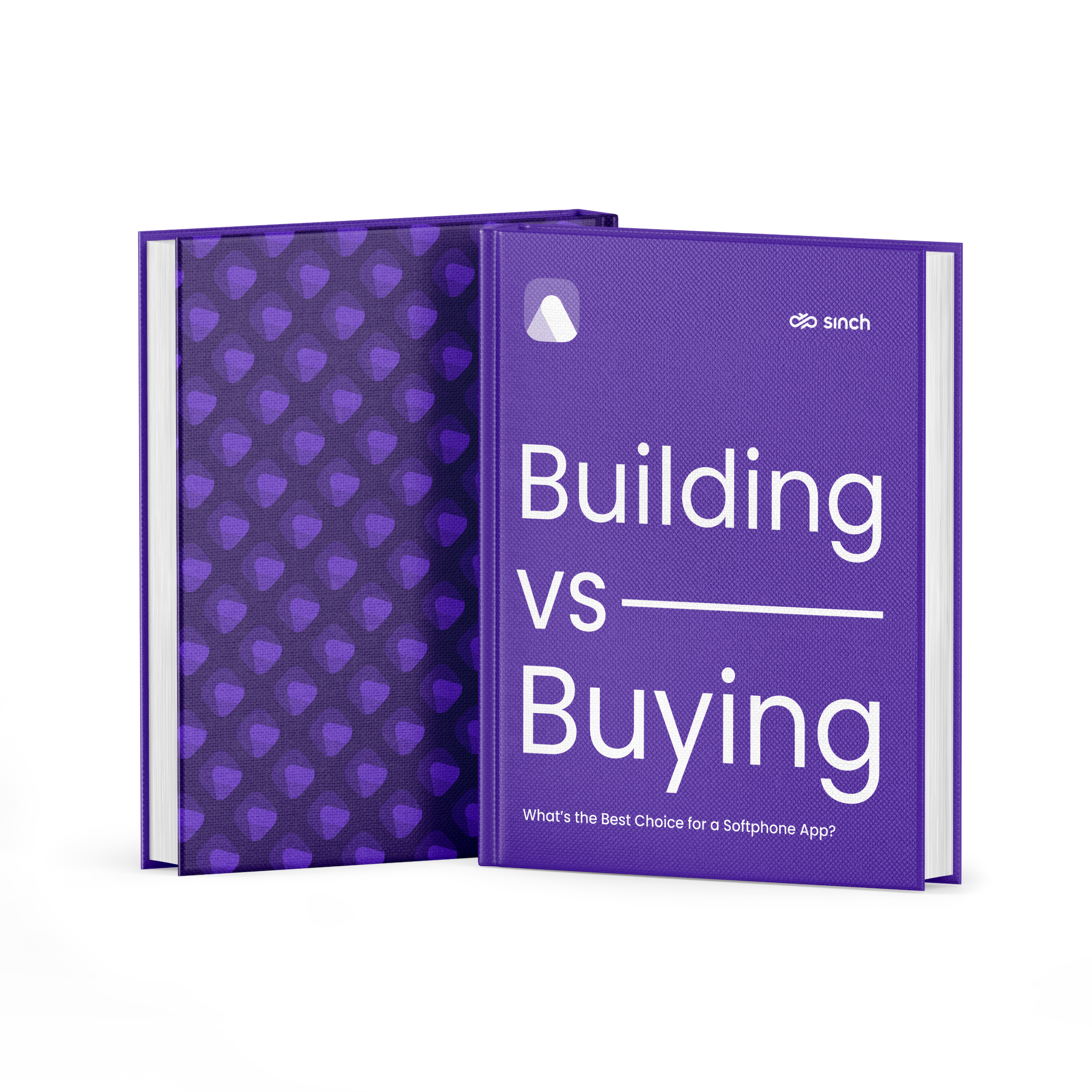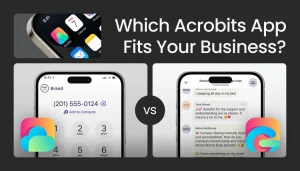“Preventing communication data from leaks is a challenge, and the high cost of hiring a dedicated security team just for the softphone app makes outsourcing that job to a third-party vendor all the more attractive.”
A Companion App
Flexibility is one of the major selling points of a softphone solution. Having the application run on any smartphone, tablet, or laptop allows users to make and receive communications no matter where they are, even if they are away from the office.
To that end, you need a companion app running on mobile operating systems like iOS and Android. Mobile app development often takes more than 6 months, especially when we’re talking about software with business-grade features and reliability. There’s also the high cost: $727,500 on average for an enterprise-ready app. And that’s not even counting the desktop programs that run on workstations within the office.
Auto-Provisioning
Configuring VoIP applications also takes quite a while for employees to perform and can cut into your business time. Manual configuration is particularly time-consuming when users are required to work remotely. It’s far more productive simply to rely on the auto-provisioning offered by softphone vendors.
Tech Support
As any manager can tell you today, outsourcing certain aspects of the job to the professionals is often the right path. Softphones need regular technical support, from installing updates to everyday maintenance.

Sure, you could do it yourself, but what if there’s a problem you need help with? Can you really rely on your own capabilities when critical communication is on the line? And how much would it really cost you in the end? In the event of an incident, a large investment into repairs might be necessary, and the resulting expenses are a headache to deal with on the financial side.
Choosing a third-party vendor means that everything is handled externally, and all you have to pay is a regular subscription fee that’s easy to budget.
What About the Features?
Softphones today are more than just Internet-connected telephones. Several must-have features are on the table now, & leaving them out can result in your company falling behind the competition.
You’ll need:
- Automatic redirects: Never miss an important contact again. Have an inbound call redirect with a virtual extension towards a fixed line.
- Calling features: Extension dialing helps coworkers connect with one another more quickly. Call holding, transferring, and queueing all help you manage incoming calls much more easily and reduce frustration with customers who might be put on hold or have to talk with someone else in the business. Caller ID is another example so that recipients know who’s calling and from where.
- Conferencing support: Whether we’re talking about three-way communication or an entire board room, multi-way conferencing is necessary for today’s collaboration-driven marketplace. Naturally, the softphone app must be compatible with a wide variety of platforms from mobile devices to desktops to browsers.
- Contact management: A shared contact directory should allow users to import existing contacts from another phone system. VoIP phones also need to excel at number management so that a single user can have multiple numbers. This way, an incoming call might ring multiple phones so that no important contact is missed.
- Multimedia support: A VoIP service is simply wasting its potential if it doesn’t take advantage of multimedia communication. We’re talking about video calling to add that extra bit of visual flair to long-distance collaboration, as well as online messaging.
- Recordings: Have you ever called a customer service hotline and been told that your call will be monitored and recorded for quality assurance purposes? Recording client calls provide you with training materials for new recruits and help you gauge and tweak the experience you’re giving your customers.
- Standard phone controls: Basic phone features like volume control, mute, and a dial pad are all still available in softphones.
- Status updates: This feature is similar to the one used on social networking sites like Facebook. Users can see which of their coworkers are currently online or out of the office.
- Transcriptions: A major convenience every busy professional needs is automatic voicemail transcription into text. Having to answer a voicemail machine is infamously time-consuming, so having them all in your email helps immensely in cutting down the chatter.
And these options are just scratching the surface of what white label VoIP softphone platforms like Acrobits might offer. From push notifications to external provisioning to extra integrations through API support, an organization new to the softphone market just might find a new killer feature it didn’t know it needed until now.
You’ve seen the tip of the iceberg, but there’s so much more beneath the surface.
- Ever wondered about the exact cost breakdown for each component?
- Curious about the real timeline for development, from start to finish?
- Want to know the insider tricks for avoiding common pitfalls?
Get the full picture in our free eBook “Building vs. Buying: What’s the Best Choice for a Softphone App?”
Who Do You Need To Build It?
Don’t forget about all the specialized staff you’ll have to hire to put it all together. Creating a strong softphone app involves the contributions of talented engineers and other technical roles.
- Software developers must handle all the coding for the laundry list of features on demand.
- UI/UX designers are required to ensure a positive user experience. End-users won’t get much value out of a VoIP service if the interface is too challenging to get used to.
- Quality assurance engineers handle all the testing at the end so that the code is stable, bug-free, and reliable enough for regular use.
- Project managers have to head the entire operation so that everyone works together seamlessly. Objectives must be set; deadlines must be laid out; problems must be solved, and everyone must stay aligned with the goals of the business the entire time.
- Enterprise architecture specialists act as the glue that holds together a company’s corporate strategy with its technological capabilities. They need to watch the market for the latest trends, analyze competitors, and generally make sure the softphone is well-optimized for the surrounding industry.
Considering the “talent shortage” in the tech industry, you may find that suitable professionals for these roles aren’t exactly easy to come by.
Can you really afford to pull developers out of your other major projects just to build a new softphone app for several months? Or would it be far more convenient just to have everything laid out for you immediately with a softphone vendor?

The Takeaway: Doing It Yourself Isn’t the Best Choice
We’ve laid out a ton of features, requirements, and resources you’ll need to develop an internal softphone app, and the conclusion should be obvious. While there are times when DIY works out, business-grade communication simply isn’t one of them.
The cost is simply too high to build a suitable internal VoIP system. Even when the process is complete, regular ongoing maintenance will continue to be a burden on the budget every year afterward.
Management teams that try to cheap out during the process will find that low-cost coding ultimately means low-performance and low reliability, resulting in communication hiccups, employee frustration, and customer dissatisfaction.
It’s for these reasons why VoIP softphones delivered as a service are the way to go. Acrobits Cloud SoftPhone App allows you to replace bulky traditional telephony with all new digital communication tools. Best of all, it still largely retains many of the benefits of designing your own solution, such as white-labeling to support your branding initiatives and customization options for tailoring it to the needs of the company.
The Million-Dollar Decision: Are You Ready to Make It?
You’ve seen the complexities involved in building a softphone app. But here’s the burning question: What don’t you know yet that could save (or cost) your company a fortune?
Our eye-opening eBook “Building vs. Buying: What’s the Best Choice for a Softphone App?” reveals:
- The hidden costs that blow most budgets sky-high
- Time-saving shortcuts even industry veterans don’t know about
- A decision-making framework used by top tech companies
Plus, we’ll show you how some businesses have slashed their costs by 70% while getting a better product.
Intrigued? Skeptical? There’s only one way to find out.












